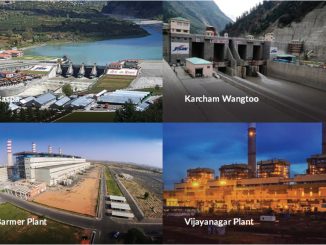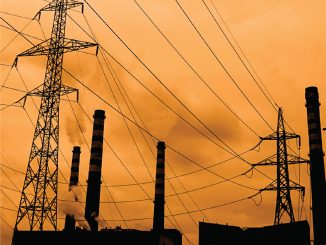
Established in 1999, PTC India Limited has emerged as a prominent player in the power sector. Its primary mission is to promote the development of a robust and commercially vibrant power market in the country, with a focus on providing power trading solutions and services. In a recent conversation with Power Line, Dr Rajib K. Mishra, chairman and managing director, PTC India, offered insights into the current power sector scenario, emerging trends, the outlook for the industry, PTC’s involvement in the sector, and the company’s future strategies and plans…
How has the power sector performed in the past one year or so?
In the previous fiscal year (2022-23), the Indian power sector demonstrated an impressive performance, boasting compelling statistics that underscore its robustness. Notably, India’s electricity generation surged to a remarkable 1,624 terawatt hours, leading to a per capita gross electricity consumption of 1,327 kWh in financial year 2023. Furthermore, the power supply deficit hit a mere 0.2 per cent, marking the lowest figure in the past five years. Simultaneously, transmission and distribution losses saw a significant reduction, now standing at 22.5 per cent. This positions India as the third-largest global producer and consumer of power.
The price and volume trends observed during the period from April to August 2023 are as follows:
- The cleared volume in the day-ahead market (DAM) was close to 21 BUs, with a volume-weighted average price (VWAP) of Rs 5.20 per kWh corresponding to a cleared volume of 12.4 BUs with a VWAP of Rs 5.11 per kWh in the real-time market (RTM) segment. For the same period in the previous financial year, the cleared volume was around 18 BUs in DAM and 10.6 BUs in RTM, with a VWAP of Rs 6.91 per kWh and Rs 6.20 per kWh respectively.
- The average selling price of domestic coal was around Rs 2,302.84 per tonne and coal production during the same period was close to 308 metric tonnes. The average coal prices for international coal are as follows:
- The average price for South African coal of 6,000 kCal per kg net as received (NAR) was $120 per tonne.
- The average price for Australian coal of 6,000 kCal per kg NAR was $162 per tonne.
- The average price for Indonesian coal of 6,000 kCal per kg NAR was $104 per tonne.
- The highest bilateral prices for RTC power during the supply period from April to October 2023 ranged from a minimum of Rs 7.40 per kWh to a maximum of Rs 10.50 per kWh, corresponding to the range of Rs 5.10 per kWh to Rs 12.03 per kWh for the same period in the previous financial year.
What more needs to be done to strengthen the short-term power market to meet the emerging needs of the Indian power sector?
Currently, most of power generation volume in India is tied up under long-term contracts, accounting for around 84-85 per cent of the total capacity. While long-term contracts provide stability and certainty, they also limit the flexibility and dynamism of the market. The addition of more short-term PPAs offers several key advantages. First, it introduces a level of liquidity and agility to the market that it currently lacks. Second, the availability of short-term PPAs incentivises new players to enter the market. Smaller and more innovative power producers, including those focused on renewable energy sources, often find it challenging to secure long-term contracts due to the dominance of established players. Additionally, procedures that streamline the financial closure of power projects based on short-term PPAs can address major barriers in the sector.
Furthermore, as India’s energy demand continues to rise, short-term PPAs can play a crucial role in meeting peak demand requirements. The ability to tap into short-term power sources during periods of high demand ensures grid stability and reduces the risk of power shortages. Diversifying India’s power market with an increased focus on short-term PPAs and streamlining associated procedures will inject vitality and competitiveness into the sector. It will provide the flexibility to adapt to changing market conditions, encourage new entrants, enhance grid stability, and ultimately benefit both producers and consumers in the evolving energy landscape.
What is your outlook for the power trading market, volumes, prices, etc., in the near to medium term?
The outlook for the Indian power trading market in the near to medium term is positive. The market is expected to grow in terms of volumes driven by several factors, including increased renewable energy generation, growing electricity demand and improved market infrastructure. According to a PRIME Database report, the Indian power trading market is expected to grow at a compound annual growth rate of 15 per cent from 2022 to 2027. The report also estimates that market volumes will reach 2,500 BUs by 2027.
However, power prices are expected to be under stress in the near term due to the nature of the supply profile in the market (renewable energy being seasonal), coupled with the growth in demand for electricity.
As the power trading market matures, new products and services are expected to be developed. This could include products such as demand response, energy storage, carbon credits and green certificates.
Overall, the outlook for the Indian power trading market in the near to medium term is positive. The market is expected to grow in terms of volumes and prices, driven by several factors such as increased renewable energy generation, growing electricity demand and improved market infrastructure.
What have been the key business highlights of PTC India in the past one year?
In financial year 2023, PTC India embarked on a year of consolidation, making strategic decisions to safeguard against negative impacts on our cost of funds and to realign our business model. Simultaneously, we initiated capacity-building efforts, particularly in technology-enabled solutions for advanced planning and forecasting. Amidst a volatile landscape, characterised by international geopolitical tensions and disruptions in the global fuel supply chain, the first quarter of 2023 presented unprecedented challenges for the power sector. National peak demand surged to 215 GW, and prices reached an all-time high in specific time blocks. In response, PTC adopted a deliberate approach, refraining from aggressive bidding in certain power exchange tenders where operating margins plummeted. These strategic choices resulted in PTC conceding negative margin volumes.
Despite these hurdles, our short-term bilateral trade saw a remarkable volume increase of over 12 per cent from the previous fiscal year, accompanied by a 7 per cent rise in operating margins. In contrast, the maturity of contracts in the medium- and long-term segments led to a 7 per cent reduction in both volume and operating margin, as compared to the previous fiscal year. Additionally, we achieved a noteworthy 13 per cent per unit increase in the core margin compared to the preceding fiscal year. On a brighter note, advisory and consultancy income surged by 22 per cent.
Significantly, our prudent financial management led to a substantial 24 per cent reduction in receivables, improving our working capital cycle. Despite macroeconomic challenges, both of our subsidiaries displayed a remarkable turnaround, achieving profitability. This resilience was evident in the consolidated figures of the PTC Group, with consolidated profits of Rs 5.09 billion, representing only an 8 per cent decrease compared to 2022.
Looking forward to the first quarter of financial year 2024, PTC’s trading volumes have surged by 16 per cent (to 20.56 BUs), and core margins have grown by 10 per cent (to Rs 644.9 million) year on year. Notably, short-term bilateral trade increased by over 7 per cent in terms of volume to 2.17 BUs compared to the same period in financial year 2023, with a 14 per cent increase in operating margin. In the power exchange segment, trade surged by an impressive 48 per cent, primarily attributed to the addition of new clients, reaching 10.26 BUs from 6.9 BUs in the first quarter of financial year 2023, with a substantial 62 per cent increase in operating margin. Medium-term contracts witnessed a 28 per cent volume increase, while long-term volumes grew by 4 per cent. However, cross-border volumes dropped by 45 per cent during the same quarter in the previous fiscal year due to reduced supply.
These figures underscore our resilience and adaptability in navigating challenges and seizing opportunities, positioning PTC for continued success in the evolving energy market landscape.
What is the current share of cross-border energy trade in your portfolio? What are the new opportunities that PTC is pursuing?
In the previous fiscal year (financial year 2023), our cross-border trade portfolio achieved substantial results, totalling 8,331 MUs. This portfolio spans three countries: Nepal, Bhutan and Bangladesh, representing approximately 12 per cent of our total trading volume. What sets these trades apart is their unique bi-directional nature.
We are pursuing an integrated approach to cross-border power procurement and sales. This approach encompasses both long-term trades from power projects and short-term trades based on seasonal surpluses. Our strategy includes securing long-term power procurement agreements for projects currently in the development phase.
Furthermore, we are actively exploring the possibility of establishing market aggregation firms, which could include trading entities and power exchanges, in these countries. This initiative may involve collaboration with local entities or independent ventures, depending on the evolving regulatory landscape in these regions.
What have been the recent long-term agreements for power purchase signed by the company? What is your outlook?
As you are aware, trading licensees are not permitted under extant regulations to participate in the long-term procurement bids of utilities. Moreover, that segment is not gaining much traction since utilities do not want to be locked in long-term procurement arrangements. Therefore, we focus on short- and medium-term agreements in the market and participate, along with the sellers, when such bids come up.
On the generator front, we are open to tying up long-term contracts with hybrid and other renewable energy projects, offtaking their power during the project’s lifespan. On the sale of such power, based on our domain expertise, we create a portfolio of sales contracts spanning from sales on power exchanges to medium-term arrangements by taking calibrated market and price risks. We ensure that the incentive structure allows generators to benefit while also ensuring project financing for project development. Our recent expression of interest to source hybrid renewable energy was a step in that direction, and we are in an advanced stage of discussions with the selected bidders. Additionally, we are also exploring the integration of conventional power plants with renewable energy to offer 24×7 solutions for the Indian power market.
How has the Hindustan Power Exchange (HPX) performed so far? How do you see it evolving in the near to medium term?
We are highly optimistic about the positive momentum that the HPX has generated since its inception in July 2022. The rapid growth in the number of clients, which now stands at 600 and continues to rise, the swift introduction of new market segments, and the remarkable achievement of facilitating over 7.5 BUs in trades are all incredibly encouraging developments.
Furthermore, in alignment with the Government of India’s strong emphasis on spot markets within the Indian power sector, there is a favourable tailwind supporting market coupling in the collective segment. This is substantiated by recent reports from the Ministry of Power, a letter issued to the Central Electricity Regulatory Commission (CERC), and the CERC staff paper on market coupling.
What is particularly noteworthy about HPX is its dynamic team, comprising 61 members with an average age of 33 years. With their energy and expertise, we anticipate that the HPX will deliver substantial value to all its stakeholders in the foreseeable future.
The HPX has been proactive in launching new segments, including the ancillary services RTM and the high-price term-ahead market (TAM), in the initial four months of operation. In financial year 2024, the HPX has already captured a significant share, amounting to one-third of the TAM. These achievements underscore the exciting growth trajectory that the HPX is on, and we are enthusiastic about its potential for continued success.
What are PTC’s future plans and priorities?
In terms of optimising our business strategy and honing our focus, I have delineated the company’s operations into two distinct categories. First, there are the legacy businesses, encompassing electricity trading and our consulting/advisory services. Second, we have future initiatives that revolve around leveraging technology and solutions within the energy value chain. This includes venturing into emerging segments such as energy storage, green hydrogen, electric vehicles and carbon markets. Within the realm of electricity trading, our strategy is multifaceted. We have shifted our emphasis towards bilateral contracts and cross-border trades, strategically targeting opportunities that offer the most favourable margins over defined periods. Moreover, we are actively crafting innovative offerings tailored to the renewable energy purchase and sale market. In parallel, we are venturing into market and credit risks by harnessing our domain expertise. Additionally, we are positioning ourselves to trade in green attributes and contribute to the burgeoning carbon market.
Our advisory/consulting business has also seen substantial growth, including the integration of the Infrastructure Leasing and Financial Services (IL&FS)-IEDC arm’s consulting portfolio. Importantly, we are undertaking complex advisory assignments such as flexibilising generation, establishing green hydrogen hubs, offering guidance on BESS and optimising distribution management.
As a part of our forward-looking initiatives, we are focused on providing cutting-edge global technology solutions within the Indian energy value chain. We have set up an in-house innovation and analytics lab. Through strategic partnerships with knowledge-based and technology firms, we are poised to deliver technology-driven solutions encompassing price and demand forecasting, predictive operations and maintenance, demand response and advanced distribution management.
Crucially, we are also committed to capacity-building initiatives that align with our forward trajectory, ensuring that we remain agile and adaptable as we journey into the future. As far as the inorganic route is concerned, we will look at only those opportunities that are strategically aligned with our services business, asset-light and not very large in terms of financial outlay, such as the IL&FS-IEDC consultancy acquisition or the setting up of the HPX.



